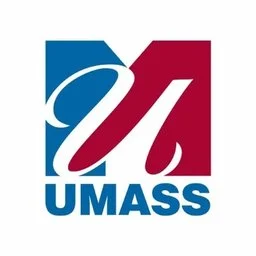Role of Leadership and Change Management in Addressing Cancer Among African Americans
Role of Leadership and Change Management in Addressing Cancer Among African Americans
Leadership plays a crucial role in addressing population health concerns, while change management enhances a smooth transition after implementing the solutions, leading to sustainable change. Using appropriate leadership strategies in developing and implementing an intervention promotes success since the leaders support it. In addition, it attracts buy-in from leaders and the population in which the intervention is being implemented, thus promoting intervention acceptance and sustainability.
Read MoreNURS-FPX4900 Assessment 4 Patient, Family, or Population Health Problem Solution Example Patient, Family or Population Health Problem Solution
NURS-FPX4900 Assessment 4 Patient, Family, or Population Health Problem Solution Example
Patient, Family or Population Health Problem Solution
Cancer is a major public health concern, affecting different health populations. The condition negatively impacts the quality of life for the individuals affected. Following assessing a population’s health concerns, nurses should propose professional solutions to these problems. The solutions should be well developed and use different considerations of the problem, such as its impact on the population.
The population problem of focus in this project is cancer among African Americans. The previous assessments assessed the problem from leadership, change management, communication, policy, costs, care quality, technology, community resources and care coordination considerations. These considerations informed the development of the intervention solution, which will be analyzed in this paper. The different aspects that influenced the development of the intervention will also be explored.
Solution/Intervention Summary
The feasible solution developed to address the cancer health concern among the African American population is population education. The population education will be presented to the group in their community while working together with other players in cancer care to ensure the health concern is addressed holistically. The population educational intervention will entail awareness creation of cancer, its risk factors, prevention and early detection, and the appropriate management of the condition. The intervention addresses the issue by improving population knowledge of the condition, thus enabling population members to take the relevant actions to prevent and manage the condition effectively.
I selected cancer as the health problem of focus after experiencing its adverse effects on individuals. Having lived and worked among the African American population, I understand the magnitude of the health concern among them, having borne a disproportionate burden. In addition, the problem is relevant to my professional practice, considering we are trained to care for patients with different healthcare conditions across the health continuum. The population also needs a solution to health concerns, thus improving patient outcomes and quality of life.
Read MoreNHS-FPX4000 Assessment 1 Developing a Health Care Perspective Case Study: To Vaccinate or not Vaccinate Children Example
NHS-FPX4000 Assessment 1 Developing a Health Care Perspective Case Study: To Vaccinate or not Vaccinate Children Example Paper
Child vaccination is a widely accepted routine worldwide. However, there are ethical considerations that involve a balance between a parent’s right in allowing vaccination or their children and the benefits to public health emanating from vaccination of children. While healthcare givers are alive to the benefits of vaccination of children, they have to contend with the right of children to accept or refuse a vaccine.
Read MoreNURS-FPX4010 Assessment 2 Interview and Interdisciplinary Issue Identification Discussion Instructions Summary of the Interview
NURS-FPX4010 Assessment 2 Interview and Interdisciplinary Issue Identification Discussion Instructions
Summary of the Interview
The interview was carried out on a nurse colleague using the interview guides provided prior to the interview. The nurse, Ms. Thomas, has been an active nurse for the past five years. In the interview, Nurse Thomas asserted that she has participated in some of the changes occurring in her healthcare facility.
Although Nurse Thomas has not been in employment for long, she has seen some transformative changes in the nursing industry and has also actively participated in instituting some of the changes in her healthcare facility. Based on her five years of experience and the changes she has witnessed, interviewing Ms. Thomas was a worthwhile activity.
Read MoreNURS-FPX4040 Assessment 2 Protected Health Information PHI Impact of Full Nurse Engagement in Healthcare Technology
Impact of Full Nurse Engagement in Healthcare Technology
The inclusion of nurse informaticists in healthcare has implications for patient care, cost, workflow, and the privacy of patient’s health information. Sensmeier and Anderson (2020) and Williams (2019) assert that nursing informatics provides a platform for solving several patient problems. Technology is used in all processes, from patient triage upon hospital admission to discharge following recovery or any prompting factors.
Read MoreNURS-FPX4040 Assessment 1 Nursing Informatics in Health Care Solved Example Nursing Informatics in Healthcare
NURS-FPX4040 Assessment 1 Nursing Informatics in Health Care Solved Example
Nursing Informatics in Healthcare
The integration of technology in healthcare is increasingly embraced. The reasons for increased incorporation include the demonstrated benefits in improving patient outcomes, improving workflow, and reducing patient and healthcare professionals’ resistance to such innovations. The latter is attributed to the incorporation of information management and patient care technologies in nursing curricula, particularly at the baccalaureate level (Reid et al., 2021).
Read MoreInterview and Interdisciplinary Issue Identification Discussion NURS-FPX4010 Example Included For this assessment, you will create a 2-4 page report on an interview you have conducted with a health care professional
Interview and Interdisciplinary Issue Identification Discussion NURS-FPX4010 Example Included
For this assessment, you will create a 2-4 page report on an interview you have conducted with a health care professional. You will identify an issue from the interview that could be improved with an interdisciplinary approach, and review best practices and evidence to address the issue.
Read MoreImproving Quality of Care and Patient Safety NURS-FPX4020 Root-Cause Analysis and Safety Improvement Plan
Improving Quality of Care and Patient Safety NURS-FPX4020
Root-Cause Analysis and Safety Improvement Plan
Medication administration errors (MEAs) are among the leading causes of disabilities, mortalities, lengthy hospitalization, and increased costs of compensating care services. According to Tsegaye et al. (2020), the World Health Organization (WHO) estimates the annual global cost associated with medication errors to be approximately $42 billion, accounting for about 0.7% of healthcare expenditures. Despite such ramifications, health organizations face challenges in eliminating medication mistakes because they can occur at any stage of the medication management process.
Read MoreNHS-FPX4000 Assessment 4 Analyzing a Current Healthcare Problem Current Health Problem: Medication Errors
NHS-FPX4000 Assessment 4 Analyzing a Current Healthcare Problem
Current Health Problem: Medication Errors
Medication use is undoubtedly the most important aspect of patient care worldwide. With the increased and widespread use of medications comes an increased risk of harm. For instance, there are approximately 6800 prescription medications in the United States, not to mention the countless over-the-counter medications (Tariq et al., 2022).
Read MoreBUSINESS CASE FOR A NEW ECONOMIC OPPORTUNITY
BUSINESS CASE FOR A NEW ECONOMIC OPPORTUNITY SAMPLE
Whilborne Medical Center (WMC) is a multispecialty health care facility situated in proximity to an industrial park. Its management is planning to start a new economic initiative in the form of an urgent care center (UCC) within WMC’s premises. The UCC will not only help provide quality health care to the community but also provide an additional revenue stream for WMC. The objective of this business case is to present a detailed report on the feasibility and cost–benefit considerations of implementing the proposed economic initiative over the next five years. The business case includes an evaluation of various risks and opportunities associated with the new initiative. It recommends ways to lessen the risks associated with setting up the UCC and strategies for controlling costs and maximizing benefits.
Read MoreNURS-FPX6218 Assessment 1 Proposing Evidence Based Change
NURS-FPX6218 Assessment 1 Proposing Evidence Based Change
Evidence-based practice involves the use of scientific research, patient preferences, and clinical knowledge to provide high quality care to patients. It is a critical approach to solving healthcare delivery problems by adopting the best intervention related to scientific research evidence. Changes guided by evidence from well-designed research increase patient comfort, safety, and outcomes.
Read MoreBHA-FPX4108 Assessment 3 Instructions: Recommend a Strategy Create a 12-18-slide presentation for community stakeholders in which you recommend a strategy to address a community health need. Introduction
BHA-FPX4108 Assessment 3 Instructions: Recommend a Strategy
Create a 12-18-slide presentation for community stakeholders in which you recommend a strategy to address a community health need.
Introduction
Read MoreImproving Quality of Care and Patient Safety Improvement Plan Tool Kit
Improving Quality of Care and Patient Safety Improvement Plan Tool Kit
This improvement plan tool kit aims to enable nurses to implement and sustain safety improvement measures in health care settings in a geropsychiatric unit. The tool kit has been organized into four categories with three annotated sources each. The categories are as follows: general organizational safety and quality best practices, environmental safety and quality risks, staff-led preventive strategies, and best practices for reporting and improving environmental safety issues.
Read MoreBHA-FPX4108 Assessment 1 Instructions: Vila Health: Pacemaker Inventory Create a 7-10 slide PowerPoint presentation that explains basic inventory management concepts and analyzes the current state of an organization’s inventory of pacemakers.
BHA-FPX4108 Assessment 1 Instructions: Vila Health: Pacemaker Inventory
Create a 7-10 slide PowerPoint presentation that explains basic inventory management concepts and analyzes the current state of an organization’s inventory of pacemakers.
Read MoreHealth Improvement Plan to Address Diabetes Among American Indians
Health Improvement Plan to Address Diabetes Among American Indians
Among the many models adopted into PHM efforts, the collaborative chronic care model (CCM) framework is successful at managing diabetes and other chronic diseases among affected populations. There are six elements that are essential to the CCM: (a) health systems, (b) delivery system design, (c) decision support, (d) clinical information systems, (e) community resources and policies, and (f) self-management support (Improving Chronic Illness Care, 2003; see Appendix, Terms and Definitions). The GHFHC’s will follow the CCM for its health improvement plan based on certain assumptions about the plan. These assumptions are that the plan (a) needs to be sustained for a long time, (b) needs to comply with evidence-based guidelines for patient care, (c) needs to focus on patient education and lifestyle improvement, (d) needs to provide affordable and cost-effective care for AIs, and (e) needs to be culturally sensitive and equitable for disadvantaged community members.
Read MorePopulation Health and Evidence-Based Practice Sample
Population Health and Evidence-Based Practice Sample
In 2015, chronic diseases such as heart disease, diabetes, and cancer were among the top seven causes of death in the United States (Centers for Disease Control and Prevention [CDC], 2017). Many health care organizations have focused their resources on controlling and preventing chronic diseases among community members through population health management (PHM) strategies (see Appendix, Terms and Definitions). In response to the prevalence of chronic diseases, the Gilbert-Hopes Family Health Center (GHFHC) in Southern Arizona has created a population health improvement plan based on PHM strategies to improve one pervasive health concern in its community—Type 2 Diabetes Mellitus (T2DM). Type 2 Diabetes Mellitus in American Indian (AI) communities is the focus of the plan. The initiatives implemented under the health improvement plan will use the best available evidence on Southern Arizona’s AI communities gained through the evaluation of demographic, epidemiological, and environmental data. Additionally, the plan will apply strategies for communicating health improvement goals with AI communities and health care professionals in an ethical, culturally sensitive, and inclusive way.
Environmental and Epidemiological Data About American Indian Communities
According to 2012 data, diabetes is a serious chronic disease affecting 29.1 million people in the United States. It can lead to conditions such as kidney failure, blindness, and heart disease. Diabetes also makes patients vulnerable to infections that require amputation (CDC, 2014). In Arizona, which has the third largest population of AIs in the country, almost 16% of AIs reported having diabetes, especially T2DM (Bass, Bailey, Gieszl, & Gouge 2015). In Southern Arizona, the CDC estimates that about 24.1% of adult AIs have diabetes. The state’s distribution of T2DM is caused by a combination of genetic and environmental factors.
Behavioral risk factors such as smoking, alcoholism, sedentary lifestyles, weight gain, and poor diets can be classified as environmental factors of T2DM and were observed among Navajo Nation and Pima Indians (Arizona Department of Health Services, Bureau of Tobacco and Chronic Disease [AZDHS], 2011; Murea, Ma, & Freedman, 2012). Exposure to pollutants is another environmental factor that can be associated with T2DM because pollutants affect insulin sensitivity and glucose metabolism (Eze et al., 2015). Genetic factors include a family history of obesity or diabetic vascular complications. Individuals with such a family history are at high risk of getting Type 2 diabetes (Murea, Ma, & Freedman, 2012).
The evaluation of epidemiological and environmental data about T2DM in AI communities has revealed several gaps in knowledge. To begin with, most epidemiological data about AIs by federal agencies such as the CDC do not have information on populations living in Indian reservations as reservations are independent governmental entities (AZDHS, 2011). Moreover, further evaluation is needed on the effects of exposure to environmental pollutants; most studies tend to focus on behavioral risk factors. These gaps in knowledge can cause health disparities among urban AIs and those living in reservations, thereby making it difficult to identify chronic disease patterns.
Furthermore, there is a need for further evaluation of sociocultural and linguistic factors that often prevent people from accessing health care. The concept of cultural competence (see Appendix, Terms and Definitions) is imperative if the GHFHC wishes to successfully implement a population health improvement plan that will address the various needs of AI communities.
Read MorePrivacy Security and Confidentiality of Patient’s Medical Record Interprofessional Staff Update Example Paper Introduction
Interprofessional Staff Update Example Paper
Introduction
Protected health Information-PHI is sensitive data belonging to patients that are used to identify them. These are the personal information of patients that contain critical data such as a patient’s medical history, insurance information, and any other critical personal information. The provisions of the Health Insurance Portability and Accountability Act-HIPAA stipulates that healthcare providers must protect the health information of their patients.
Privacy Security and Confidentiality of Patient’s Medical Record
Read MoreNURS-FPX4050 Assessment 1 Preliminary Care Coordination Plan SOLVED Preliminary Care Coordination Plan
NURS-FPX4050 Assessment 1 Preliminary Care Coordination Plan SOLVED
Preliminary Care Coordination Plan
Taking the role of care coordination as an RN in the community care center, it is essential to acknowledge age-related and elder care health issues. Aging encompasses numerous physical, psychosocial, and cultural issues, which together make it very demanding and, therefore, require a multi-faceted approach to achieve optimum health for our elderly citizens. This initial plan for care coordination has HF as the focus when it comes to elderly patients in a community care context.
The staff shortage in the dedicated care management area prompts the development of a different approach, where the functions of the nurses predominate in care coordination. The plan below encompasses physical, psychosocial, and cultural considerations for elderly patients with HF, as well as community resources that can provide a safe and effective continuum of care.
Analysis of Health Concerns and Best Practices
Read MoreSelected Health Concern and the Associated Best Practices for Health Improvement
Pain management is an area that has many problems and ethical issues surrounding it. Pain accompanies most healthcare conditions, and the intensity, severity, and duration differ based on personal characteristics and the pain etiology. Pain management faces many issues due to tolerance and opioid addiction, affecting all health domains.
McCabe (2018) notes that physical pain can be disabling and limit daily activities, cause psychosocial pain, and affect the social interaction of individuals. Pain aggravates the management of conditions such as cancer when patients take many medications with various side effects, such as nausea and vomiting. Yet, they do not feel their therapeutic effectiveness because the pain does not cease. Thus, pain management needs to be addressed owing to the many issues associated with the problem.
Read MoreHQS 630 Topic 8 DQ 2 How would you assess the need for an adjustment within a change project? What impact could this have on the project timeline? If an adjustment were needed on your project, how would you determine the best timing for making said adjustment? What considerations would you have for communicating the needed adjustments to the appropriate stakeholder groups?
HQS 630 Topic 8 DQ 2
How would you assess the need for an adjustment within a change project? What impact could this have on the project timeline? If an adjustment were needed on your project, how would you determine the best timing for making said adjustment? What considerations would you have for communicating the needed adjustments to the appropriate stakeholder groups?
Read More






